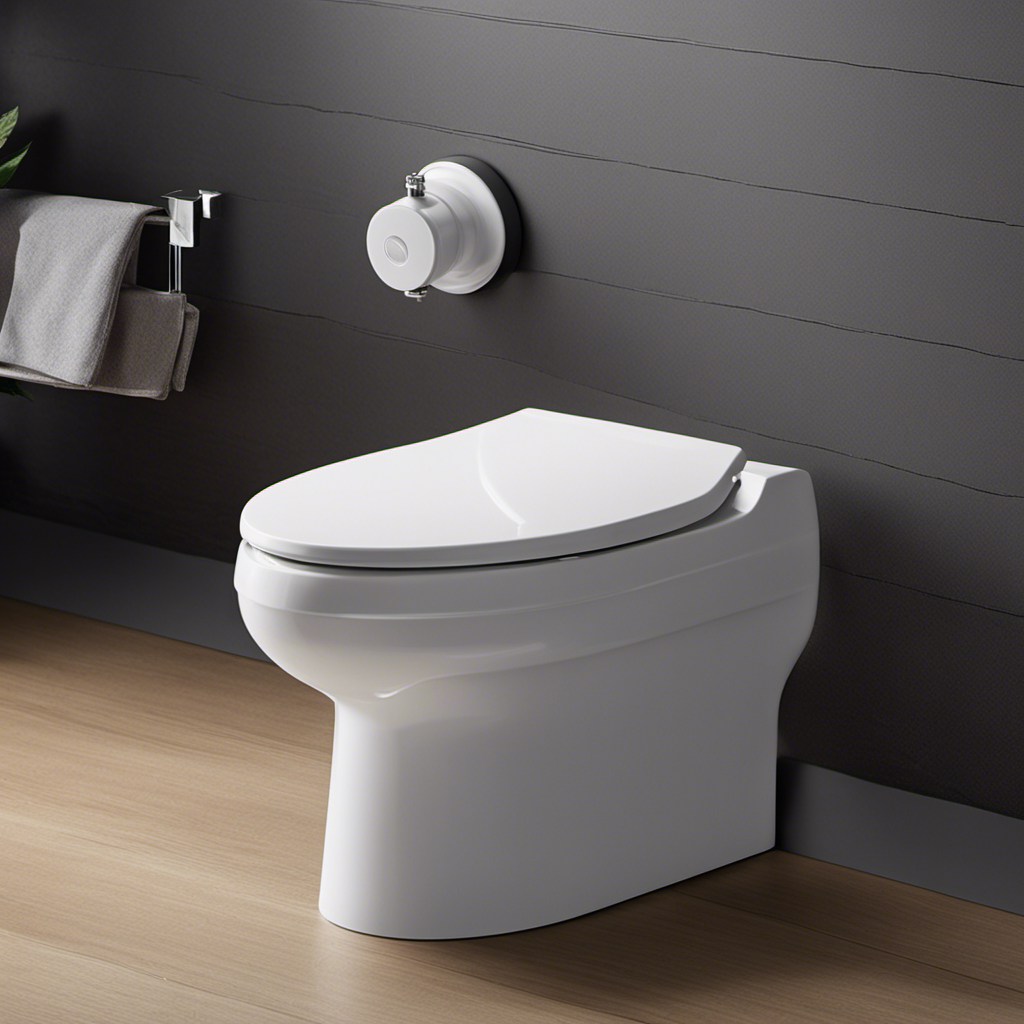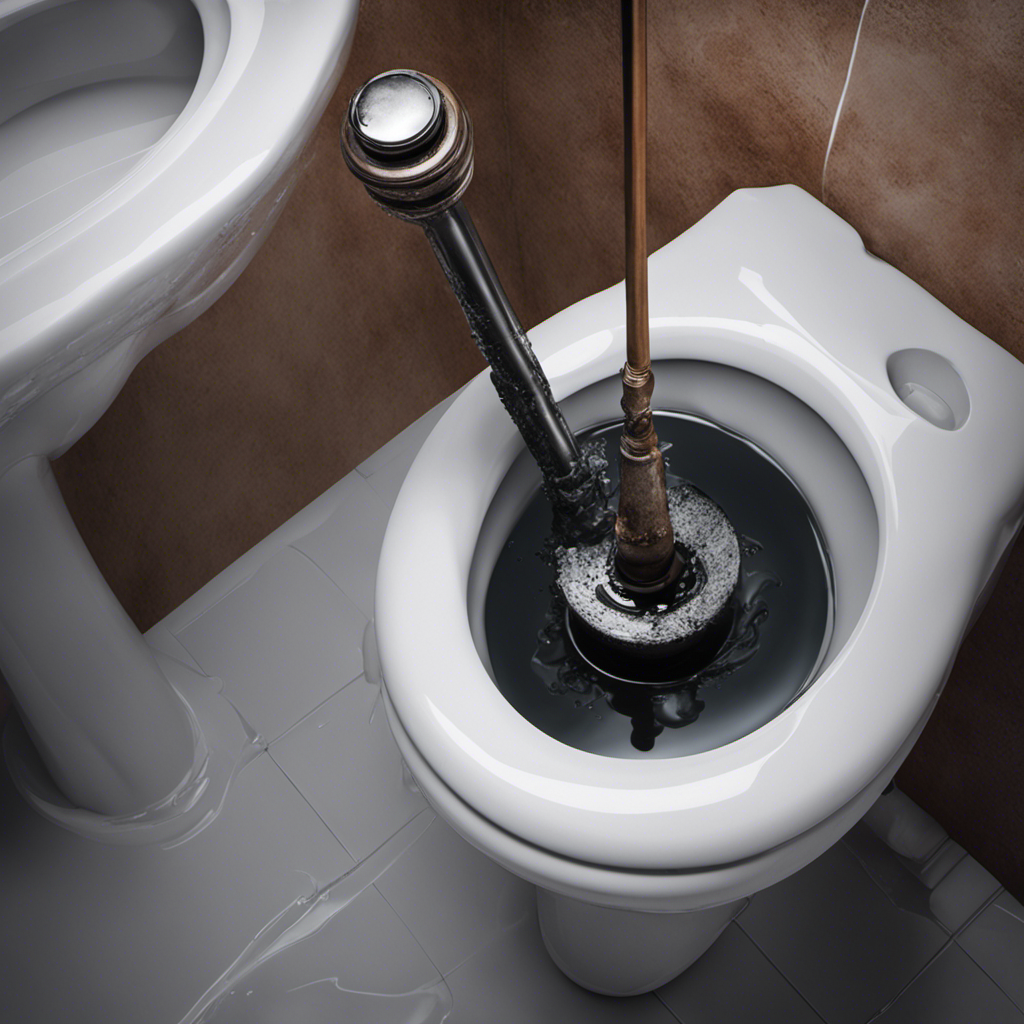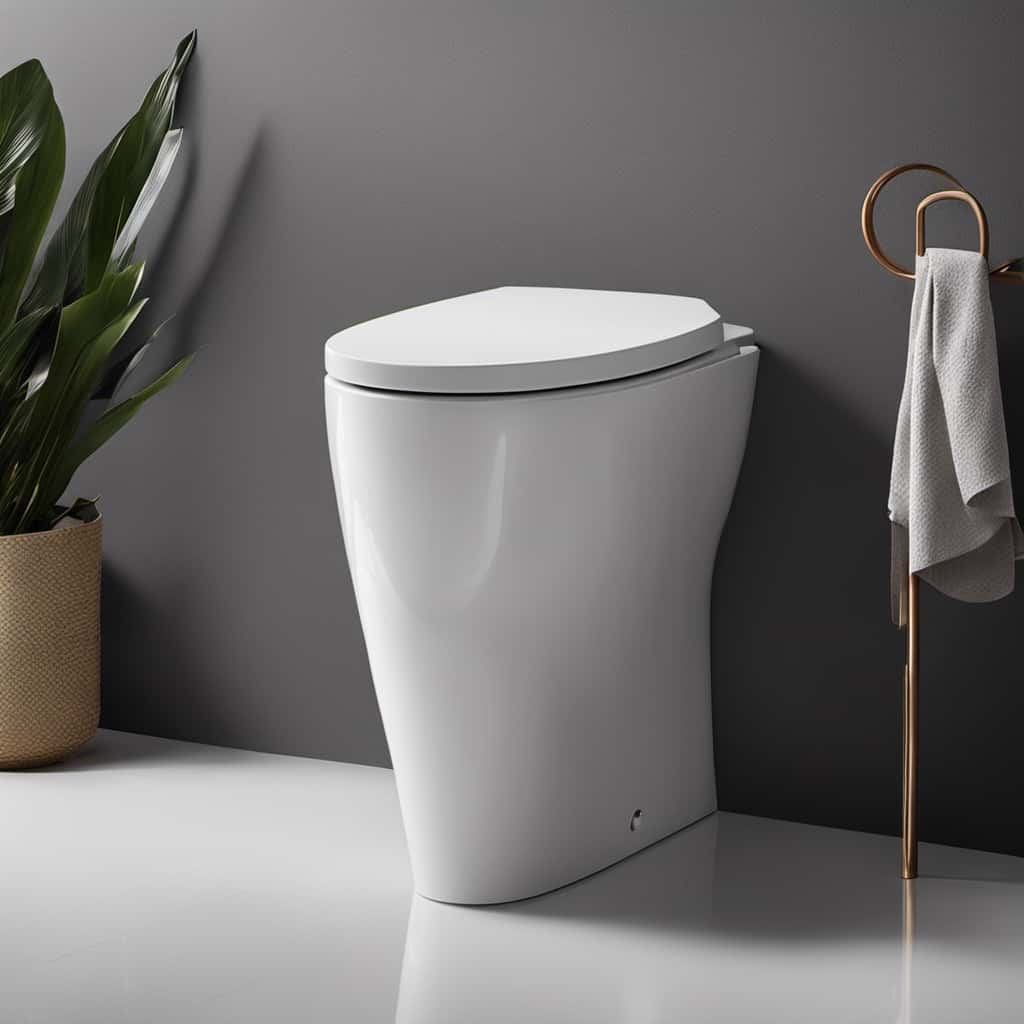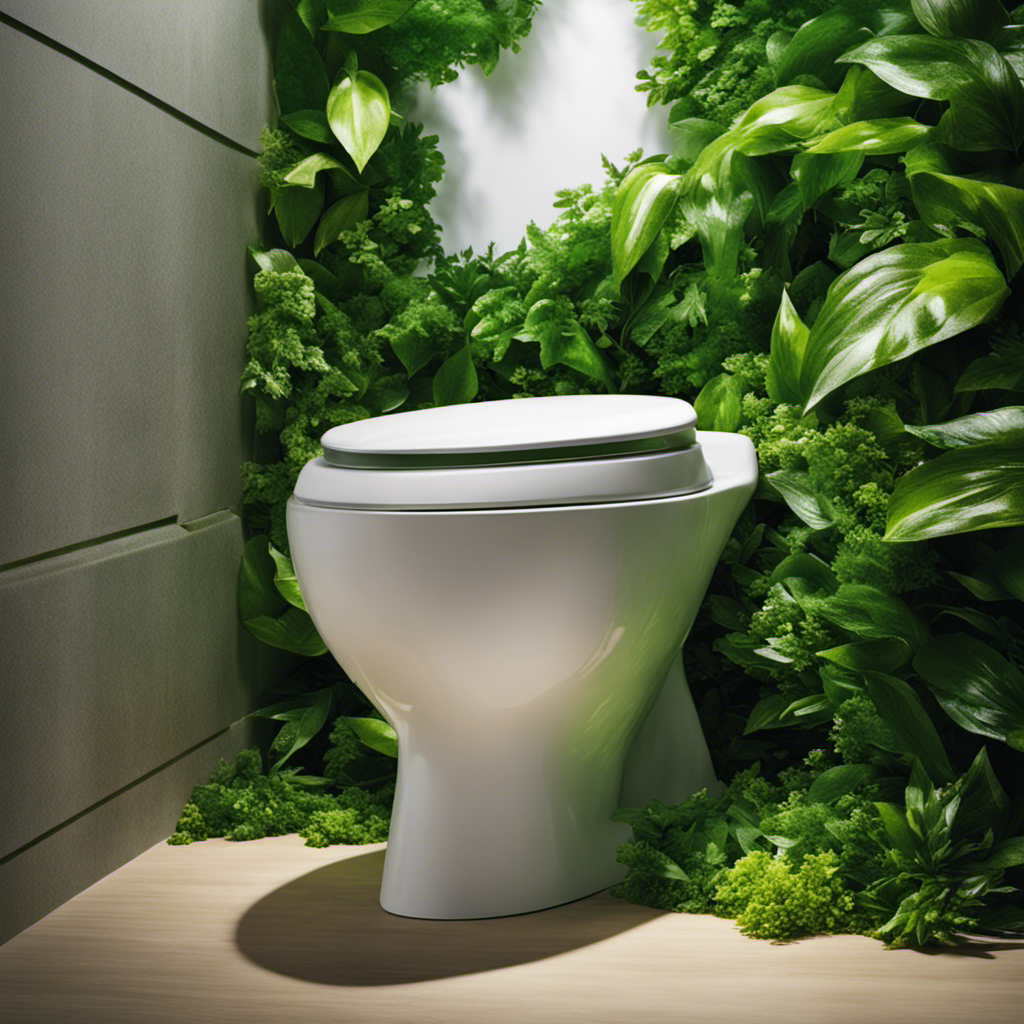Did you know that a faulty toilet flange can lead to costly water damage and unsanitary conditions in your bathroom?
As a plumbing expert, I understand the importance of a properly functioning toilet flange and the role it plays in your plumbing system.
In this article, I will guide you through the anatomy of a toilet flange, explain how it works, and provide step-by-step instructions on how to replace a damaged flange.
By the end, you’ll have the knowledge and expertise to tackle any toilet flange issue with confidence.
Key Takeaways
- A toilet flange is crucial for preventing water damage and unsanitary conditions in the bathroom.
- Proper installation of a toilet flange is essential for stability and functionality.
- Understanding the anatomy of a toilet flange is important for installation and maintenance.
- There are different types of toilet flanges available, including PVC, cast iron, stainless steel, offset, and repair flanges.
Importance of a Toilet Flange
You need to understand the importance of a toilet flange because it helps to secure your toilet to the floor and prevent leaks. Proper installation of a toilet flange is crucial to ensure the stability and functionality of your toilet.
One common mistake that people make during installation is not using the right materials. It is essential to choose a toilet flange made of durable materials like PVC or cast iron to withstand the weight and pressure of the toilet.
Another mistake is improper alignment. The toilet flange should be aligned correctly with the drain pipe to ensure a tight seal and prevent leaks.
Additionally, using the correct size of bolts and nuts is vital for a secure installation.
Anatomy of a Toilet Flange
The anatomy of a toilet flange includes a metal or plastic ring that fits around the waste pipe. As a plumbing expert, I understand the importance of a well-installed toilet flange in maintaining a leak-free and secure connection between the toilet and the sewage system.
Here are the key components of a toilet flange:
-
Ring: The ring, made of metal or plastic, is the main body of the flange. It is designed to fit around the waste pipe and provide a stable base for the toilet.
-
Bolt Slots: The flange has slots to accommodate bolts that secure the toilet to the floor. These bolts ensure the toilet remains in place during use.
-
Wax Seal: The flange has a recessed area where a wax seal is placed. This seal prevents sewer gas and water from leaking out of the toilet.
-
Closet Bend Connection: The flange connects to the closet bend, which is a curved pipe that directs waste to the main sewer line.
Understanding the anatomy of a toilet flange is crucial for proper installation and maintenance.
In the next section, we will explore the different types of toilet flanges available.
Types of Toilet Flanges
There are several types of toilet flanges available in the market. As a plumbing expert, I have encountered various toilet flange installations and common toilet flange problems. To help you understand the different types of toilet flanges, I have provided a table below:
| Type | Description |
|---|---|
| PVC | Made from polyvinyl chloride, these flanges are durable and resistant to corrosion. |
| Cast Iron | Known for their strength and durability, cast iron flanges are ideal for heavy-duty applications. |
| Stainless Steel | These flanges offer excellent corrosion resistance and are often used in commercial settings. |
| Offset | Offset flanges are used when the toilet drain pipe is not in line with the center of the toilet. |
| Repair | These flanges are designed to fix a damaged or broken toilet flange without replacing the entire unit. |
Understanding the different types of toilet flanges can help you choose the right one for your installation needs. Whether you are dealing with a common toilet flange problem or simply need to install a new flange, it is important to have the proper knowledge and tools to ensure a successful outcome.
How a Toilet Flange Works
When installing a toilet, it’s important to understand how the flange functions. The toilet flange is a crucial component that connects the toilet to the drainpipe and ensures a secure and watertight seal.
Here’s how it works:
-
Alignment: The flange is positioned over the drainpipe and aligned with the floor. It should be level and flush with the finished floor surface.
-
Attachment: The flange is secured to the floor using screws or bolts, ensuring a stable base for the toilet.
-
Seal: A wax ring or rubber gasket is placed on top of the flange to create a watertight seal between the toilet and the drainpipe.
-
Toilet Installation: The toilet is then carefully lowered onto the flange, compressing the wax ring or gasket to form a tight seal.
Understanding the proper installation of a toilet flange can help prevent common problems like leaks and unstable toilets.
Now, let’s explore the signs of a damaged toilet flange.
Signs of a Damaged Toilet Flange
A leaking toilet flange can be a common plumbing issue that homeowners may encounter. When a toilet flange is damaged or worn out, it can result in water leakage around the base of the toilet, leading to potential water damage and unpleasant odors.
In this discussion, I will provide detailed explanations on the repair options available for a leaking toilet flange. I will also include troubleshooting tips and step-by-step instructions to help resolve this plumbing problem effectively.
Leaking Toilet Flange
To fix a leaking toilet flange, you’ll need to tighten the bolts securing it to the floor. Here are some common causes of a leaking toilet flange and how to address them:
-
Worn Wax Ring: The wax ring that seals the toilet to the flange may wear out over time, causing leaks. To fix this, remove the toilet, replace the wax ring, and reattach the toilet.
-
Loose Bolts: If the bolts securing the flange to the floor are loose, water can seep through. Tighten the bolts using a wrench to create a watertight seal.
-
Cracked Flange: A cracked flange can also lead to leaks. In this case, you’ll need to replace the flange. Turn off the water supply, remove the toilet, and install a new flange.
-
Damaged Gasket: The gasket between the toilet tank and flange may be damaged, causing leaks. Replace the gasket to prevent further leakage.
Repair Options Available?
If you’re wondering what repair options are available for a leaking toilet flange, there are several solutions to consider.
Common problems with a leaking toilet flange can include cracks, broken seals, or loose bolts.
To fix these issues, you can start by tightening the bolts that secure the flange to the floor.
If the flange is cracked or broken, you may need to replace it entirely. This involves removing the toilet, disconnecting the water supply, and unscrewing the flange from the floor.
Once the old flange is removed, you can install a new one and reattach the toilet. It’s important to ensure a proper seal by using a wax ring or rubber gasket.
Remember to check for any leaks and test the flush to ensure everything is working correctly.
Steps to Replace a Toilet Flange
First, you’ll need to gather the necessary tools for replacing a toilet flange.
Here’s a step-by-step guide to help you with the process:
-
Turn off the water supply: Locate the shut-off valve behind the toilet and turn it off to prevent any water leakage during the installation.
-
Remove the toilet: Disconnect the water supply line and unscrew the bolts securing the toilet to the flange. Carefully lift the toilet and set it aside.
-
Remove the old flange: Inspect the flange for any damage or cracks. Use a wrench or pliers to remove the screws or bolts securing the flange to the floor. Lift the old flange out gently.
-
Install the new flange: Place the new flange over the existing drainpipe and align it properly. Secure the flange to the floor using new screws or bolts. Make sure it is firmly attached.
Tips for Maintaining a Toilet Flange
To prevent water leaks and extend the lifespan of a toilet flange, there are several key points to keep in mind.
First, ensuring a proper seal between the toilet and the flange is crucial. This can be achieved by using a high-quality wax ring and tightening the bolts evenly.
Additionally, regular maintenance and inspection of the flange, including checking for signs of corrosion or damage, can help identify and address potential issues before they escalate.
Preventing Water Leaks
Make sure you regularly inspect your toilet flange to avoid any water leaks. Water leaks can cause significant damage to your bathroom and can be expensive to repair. Here are some tips to prevent water leaks and ensure the longevity of your toilet flange:
-
Choose the right toilet flange: Select a flange made of durable materials, such as PVC or stainless steel, to prevent corrosion and ensure a long lifespan.
-
Proper installation: Make sure the toilet flange is securely attached to the floor and properly sealed to prevent any water leakage.
-
Regular maintenance: Inspect the flange for any signs of damage, such as cracks or rust, and replace it if necessary. Also, check the seal between the flange and the toilet bowl periodically and replace it if it shows signs of wear.
-
Be cautious with cleaning products: Avoid using harsh chemicals that can corrode the flange or damage the seal. Stick to mild, non-abrasive cleaners.
Extending Flange Lifespan
Inspecting regularly and replacing damaged parts can significantly extend the lifespan of your toilet flange. The toilet flange is an essential component that connects the toilet bowl to the sewer pipe and ensures a watertight seal. Over time, however, flanges can experience common problems such as cracks, leaks, and corrosion. By taking proactive measures, you can prevent these issues and prolong the life of your flange. Regularly inspecting the flange for any signs of damage or wear is crucial. If you notice any cracks or leaks, it is important to replace the damaged parts promptly. Additionally, using quality materials and ensuring proper installation can also contribute to the longevity of your flange. By following these steps, you can extend the lifespan of your toilet flange and avoid costly repairs or replacements.
| Common Flange Problems | Causes | Solutions |
|---|---|---|
| Cracks | Excessive weight or force | Replace the damaged flange |
| Leaks | Poor seal or worn gasket | Replace the gasket or tighten the seal |
| Corrosion | Exposure to moisture or chemicals | Clean the flange and apply a protective coating |
Frequently Asked Questions
Can a Toilet Flange Be Installed by Someone With No Plumbing Experience?
Yes, a toilet flange can be installed by someone with no plumbing experience. It is a relatively simple DIY toilet flange replacement task that involves securing the flange to the floor and connecting the toilet.
How Do I Know if My Toilet Flange Is Damaged or Needs to Be Replaced?
To determine if a toilet flange is damaged or needs replacing, look for signs like water leakage, wobbling toilet, or foul odors. Repair options include using a repair kit or replacing the flange entirely.
Are There Different Sizes of Toilet Flanges Available?
Toilet flange sizes vary to accommodate different toilet models. It’s crucial to choose the correct size for a proper installation. The difficulty of installation depends on the existing plumbing system and the level of expertise.
Can a Damaged Toilet Flange Cause Leaks or Odors in the Bathroom?
Yes, a damaged toilet flange can definitely cause leaks and odors in the bathroom. It is crucial to conduct regular leak detection and toilet flange maintenance to prevent such issues.
Is It Possible to Repair a Damaged Toilet Flange, or Does It Always Need to Be Replaced?
Repairing a damaged toilet flange can be a viable option, but it’s important to consider the pros and cons. While it may save time and money, there is a risk of further damage or recurring issues.
Conclusion
In conclusion, the toilet flange is an essential component of a toilet’s plumbing system. Its main function is to securely connect the toilet to the floor and the wastewater pipe, allowing for proper flushing and waste disposal.
Understanding the anatomy and types of toilet flanges is crucial for identifying and addressing any issues that may arise. By following the steps to replace a damaged flange and maintaining it regularly, homeowners can ensure the smooth operation of their toilets and avoid potential plumbing problems.
Happy plumbing!










